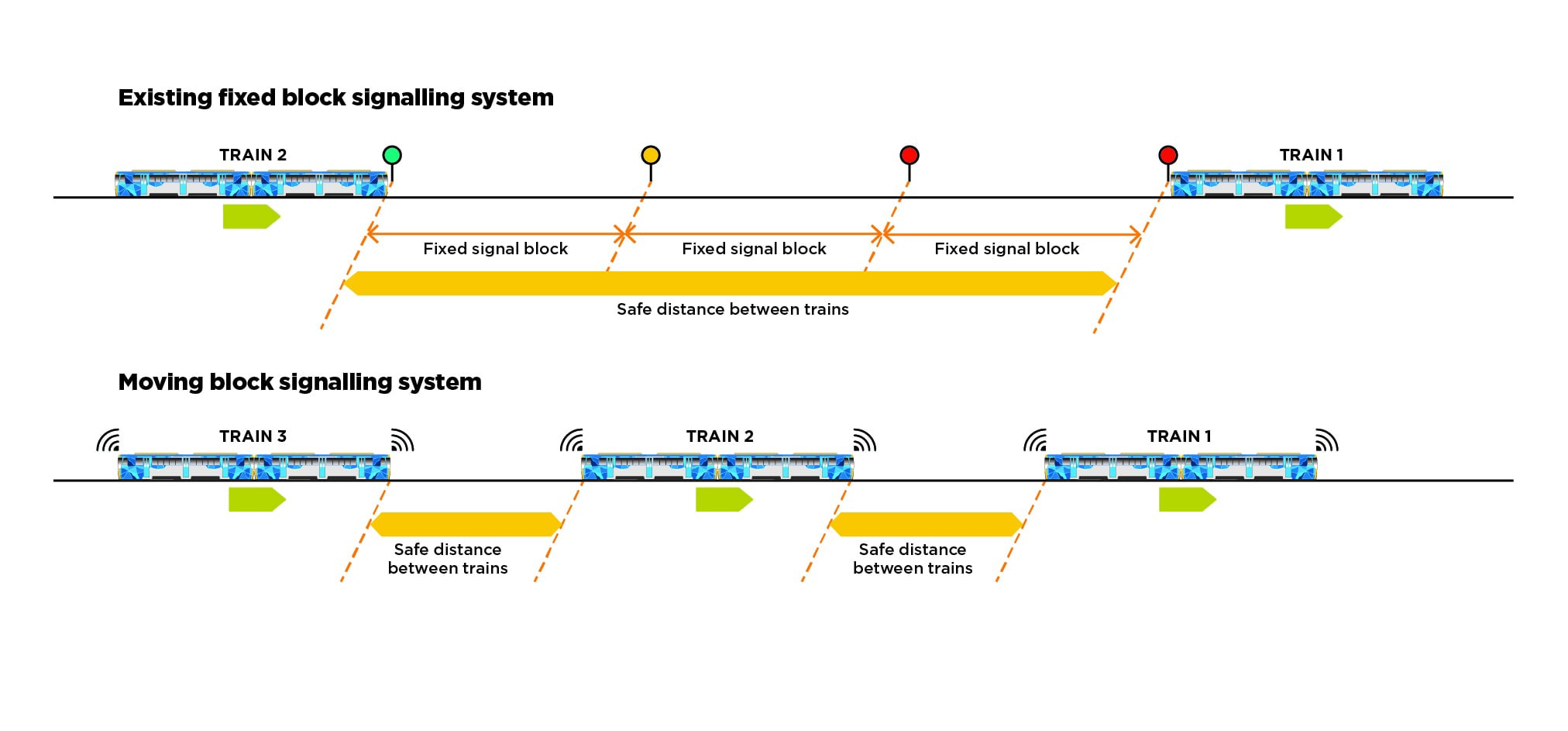Find out about the new signalling system installed on Melbourne's rail network.
High Capacity Signalling
The Metro Tunnel line will use High Capacity Signalling (HCS) to allow for more trains more often.
HCS uses cutting edge technology to provide information about exactly where each train is and control the speed of each train in relation to others on the line.
Signalling tells a train when to stop, start and where to go. In the past, we relied on workers pushing levers and then later a traffic light system to control these movements from a central control centre. This “fixed block signalling system” meant trains needed to keep a big distance between them to allow for any delays in responding to the signals and make sure trains never ran into each other. This limited the number of trains that could run on a track at any one time.
HCS sends location and speed information in real time to new, hi-tech control centres, allowing more trains to run safely on the network. This is known as “moving block signalling”. It allows trains to “recognise” the other trains in front of them, and then slow down or speed up, depending on the traffic.
This means the trains can safely run more closely together, so we can fit more of them on the track at any one time.
More trains mean fewer delays between arrivals and departures across Melbourne’s stations, enabling more passengers to travel on our network daily.

Changing signals
Watch this video to see how signalling has changed over time. What do you think the benefits of High Capacity Signalling are?
Activities
Now earn your Signalling Wizard badge by completing 1 of these activities.
Mastermind!
Once you’ve completed 1 or more of these activities, come back here to download your Signalling Wizard badge (PDF, 107.8 KB). Congratulations!